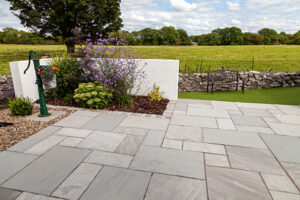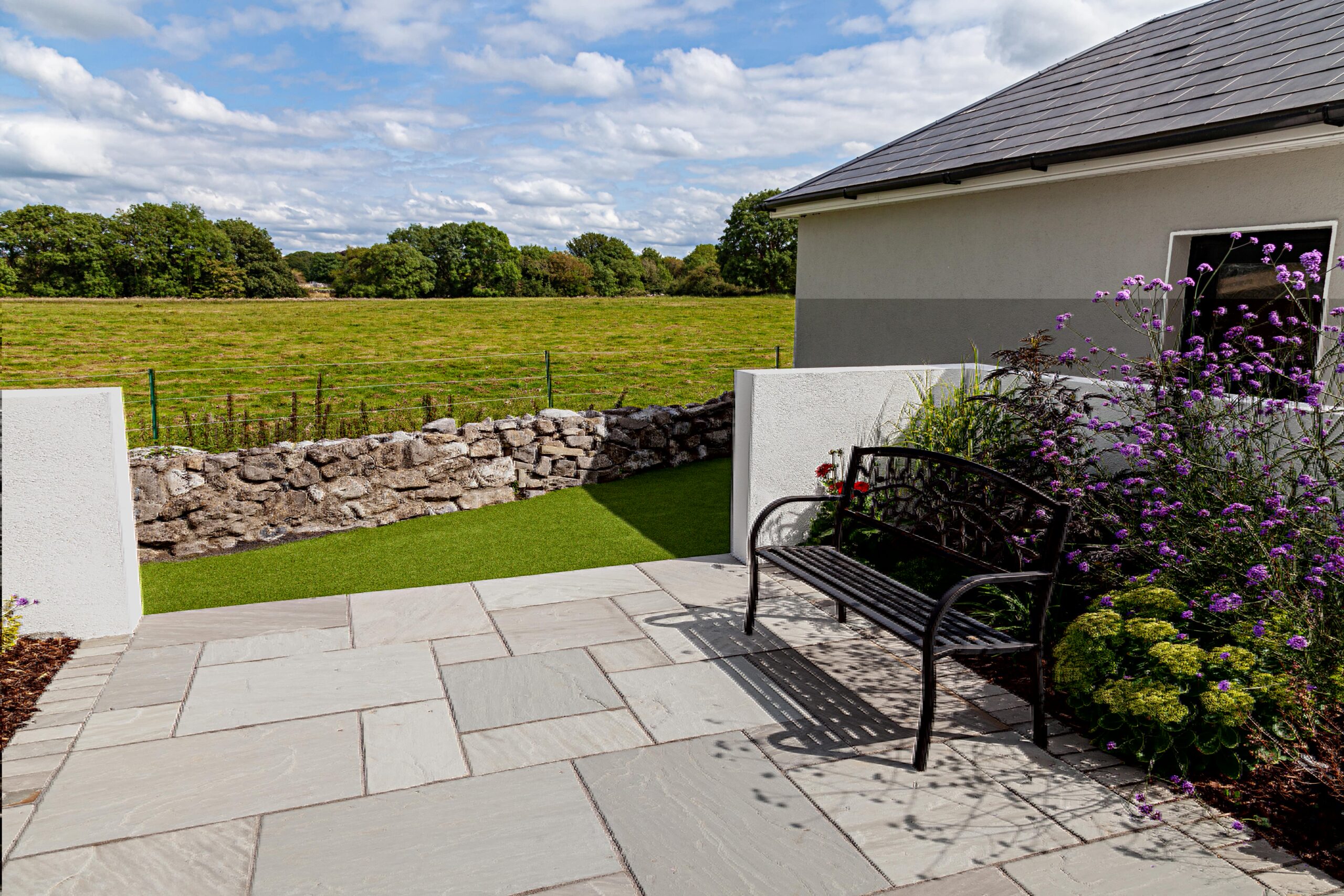
We’ve teamed up with The Paving Expert, Tony McCormack, to discuss how to choose a size and shape for your patio.
It can be difficult to choose a size and shape for your patio. You need to consider the size of your garden, patio furniture, current trends and intended uses before you make your decision. The Paving Expert, Tony McCormack discusses below how to reach these decisions so that you can enjoy your patio for many years to come. Tony McCormack is a highly knowledgable paving consultant and offers lots of excellent resources on his website https://www.pavingexpert.com/.
Does a patio always have to be square or rectangular?
There’s an assumption that a patio shape has to be a simple square or rectangle of paving directly outside the rear doors. The problem is that this rarely works effectively. All too often it’s too small to be of any practical use. At the other extreme, it completely dominates the garden. This can leave you with seemingly acres of paved empty space and a few items of over-priced outdoor furniture scattered at random. There usually is an optimal size for a patio, but it’s not something that follows a mathematical rule. It’s based on how the patio will be used, combined with the preferred style of those users.
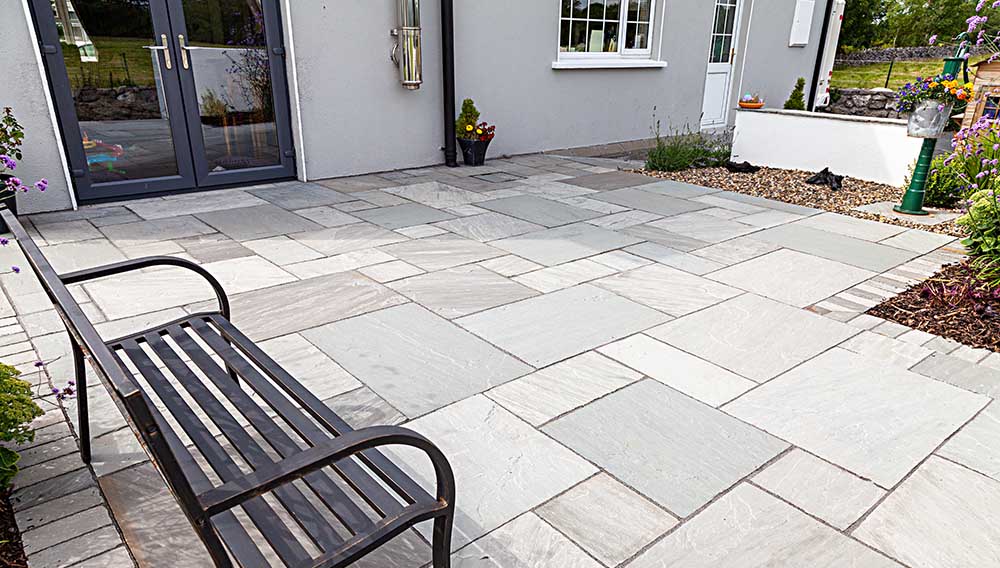
How to Choose a Size for your Patio
At a basic level, there should be room to accommodate a table. Is that a bistro-style table for two, or a party-central expanse that wouldn’t be out of place in a pub beer garden? Maybe you’ll have different needs at different times. Perhaps a cosy corner spot for an early-morning breakfast. Or a family-and-friends spread for those summer weekend evenings. Take time to decide what you will use your patio for, as this will help to determine the size of your patio.
Patio Furniture Measurements
So, you need room for a table, but a table also needs chairs. The typical 1.8m dimension for a patio table, suddenly needs another 450mm or so for a chair. However, we’re not done yet. That needs to be +900mm because you’ll want chairs at both sides of the table. We’re up at 2.7m now. And then there’s nothing more annoying than trying to squeeze past a fully-seated table, or pushing out the chair to get up for another beer, and it ends up in the flower bed or sinking its legs into the lawn.
You need manoeuvring space, probably 500-600mm to ensure there’s not too much of an invasion of personal space. Add that 600mm to each side of the table, that’s another 1.2m and now we’re at 3.9m. All that for a 1.8m width table! To be fair, for a table of that size, it is perfectly possible to get by with 3.6m, but that’s about as tight as you’d want to go. Four metres is ample and comfortable.
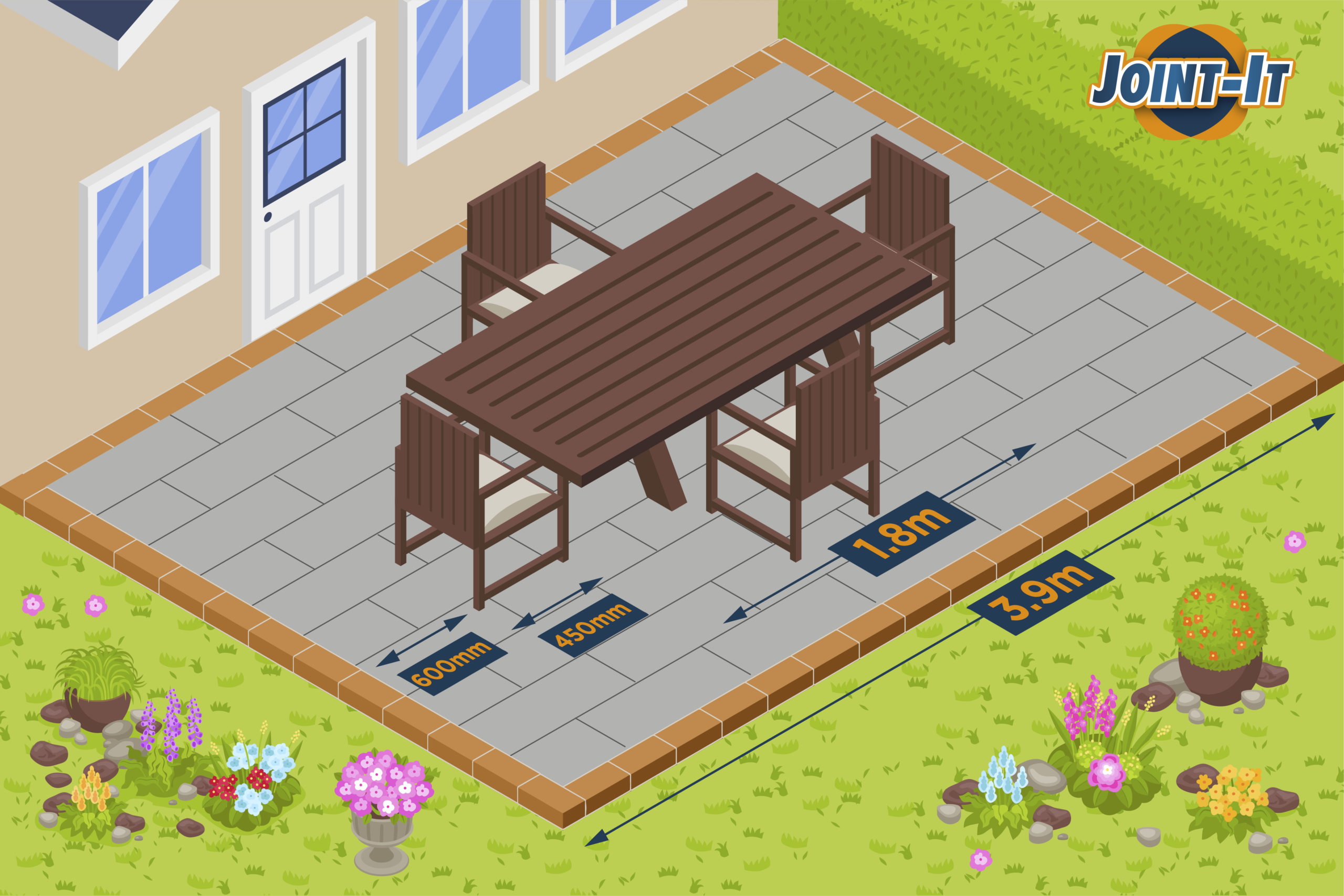
If that’s too big a space to give over to hard-landscaping, then maybe choose a smaller table. It’s surprising how practical a simple 1.2m width table can be. However, the size of the patio needs to suit the scale of the garden. A 4m patio is fantastic, but if the garden is only, say, 7m wide, is it right to use more than half of it for paving? Alternatively, if there’s an acre or more, then 4m might seem a little mean-spirited.
Top Tip
It’s rarely a good idea to cover more than half the garden space available with hard surfaces. While some designs do precisely that and look fantastic, there needs to be a balance between the paving and the greenery; the hardscape and the softscape. The way the patio is to be used, and the space available, will determine what size works best.
How to Choose a Shape for your Patio
Simple rectangles work better in small plots and/or with strong geometric designs. Neat edges, crisp definition, straight lines are powerful features and are probably best used with caution. For larger areas, and particularly for those looking at a more traditional garden style, the patio offers the opportunity to create a subconscious transition from the strict orthogonal geometry of the house to the more organic, softer features of the garden itself.
A patio against the house will most likely have a straight, regimented line where it abuts the brickwork. There can also be a sinuous, curved or sculpted edge where it meets the lawn or the flower beds. A dog-legged or staggered step edge can also provide that less formal, gentler changeover. Free-standing patios, those not abutting the house or any other straight, rigid feature such as a boundary wall or fence, may take on a wholly organic shape, or perhaps a more sympathetic geometric shape, such as a circle or ellipse.
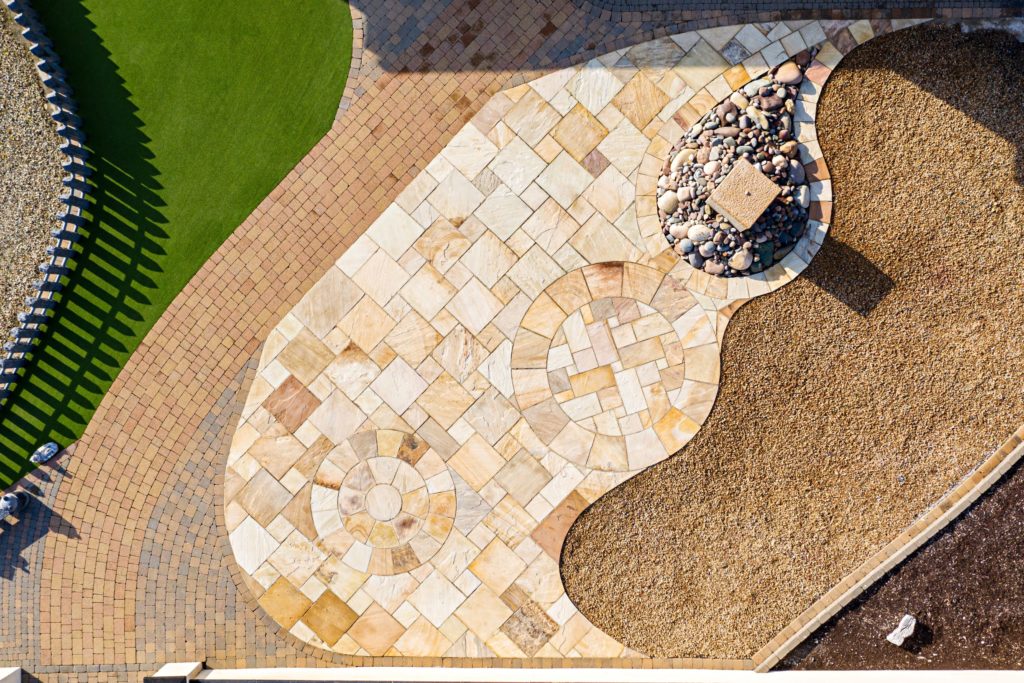
A strict, geometric square or rectangle can bring an element of formality, if so desired. With triangles…well, no installer will thank you for choosing a triangular shape. While they can seem highly appealing when sketched on a designer’s pad, it’s incredibly awkward to make them look right on the ground, and there’s a lot of tricky cutting!
Finally, give some thought to those edges where the garden meets the paving. Will that be a clipped and trimmed lawn edge? Would it benefit from an edging to give it upstand? If it’s a flower bed, plants will most likely spill over and soften the edge even more. Areas of loose cover, such as gravel or shingle or bark, abutting the patio may benefit from some form of retainer to keep the unruly stones in place on off the hard paving.
Final Thoughts
A patio offers so much for a garden, and it has very few design limitations. The tips above should guide you towards choosing a size and shape for your patio that suits your needs. Your patio needs to be stylish and it needs to be functional, but beyond that, the only limits are the space available and your imagination.
This article “How to Choose a Size and Shape for your Patio” was written by Tony McCormack in conjunction with Joint-It.
Joint-It are a leading manufacturer of professional jointing and stone care products. The patio grout used in the photos of this article is Joint-It Simple: https://jointit.com/products/joint-it-simple/
Joint-It are a leading manufacturer of professional jointing and stone care products. The patio grout used in the photos of this article is Joint-It Simple: https://jointit.com/products/joint-it-simple/


